One of my fondest memories of the Husteca Potosina, the Huastec region of Mexico, is savoring the famous zacahuil, the region’s signature dish. Zacahuil is a giant Mexican tamale. It differs from regular sized tamales in that it is richer in texture and color thanks to the dried chili pods sauce, marinated meat and one of a kind flavor that you won’t find anywhere else; unless you are baking in an adobe oven such as the ones used by traditional Southwest Pueblos.
In Mexico, zacahuil is referred to as the “the Tamale of Tamales” or the “Party Tamale” because it is the biggest tamale dish ever prepared. It is usually reserved to feed big social gatherings and parties. The size of the average zacahuil measures at least one 1 meter long (3 feet), some zacahuiles can measure up to 5 meters long depending on the size of the social gathering. The average zacahuil can feed from 50 to 150 people. Given this information it is obvious why the Huastecs named this dish zacahuil which comes from the Maya (Huastec or Téenek) language meaning bocado grande, Spanish for big bite.
I have a special respect for this delicious dish because the original recipe is an ancient one. The preparation of this dish endured despite the numerous and eager attempts from the Spaniards to suppress indigenous customs and traditions during their colonization of Mexico. There is even a legend and a song paying tribute to this special dish!
Zacahuil is an ancient ethnic dish that traces its origins back to hundreds of years before the Spanish arrival in Mexico. The basic recipe includes ground corn, a variety of dried chili peppers (such as guajillo, ancho, and cascabel), chicken or pork or both, salt, and lard. Some regions of Mexico use seafood in their zacahuil. Finally, the tamale is wrapped in banana or papatla leaves, tied up and cooked overnight for 8 to 12 hours in an adobe bake oven.
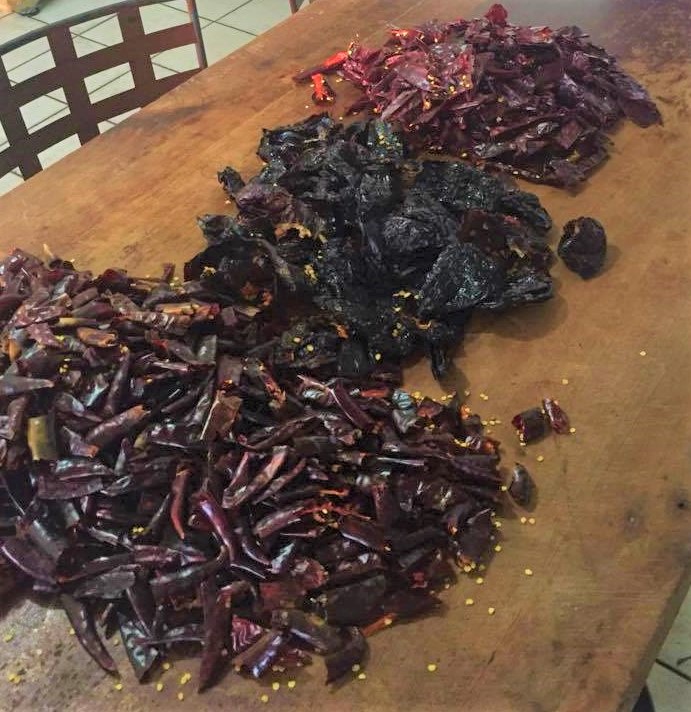
chile cascabel, ancho, and guajillo
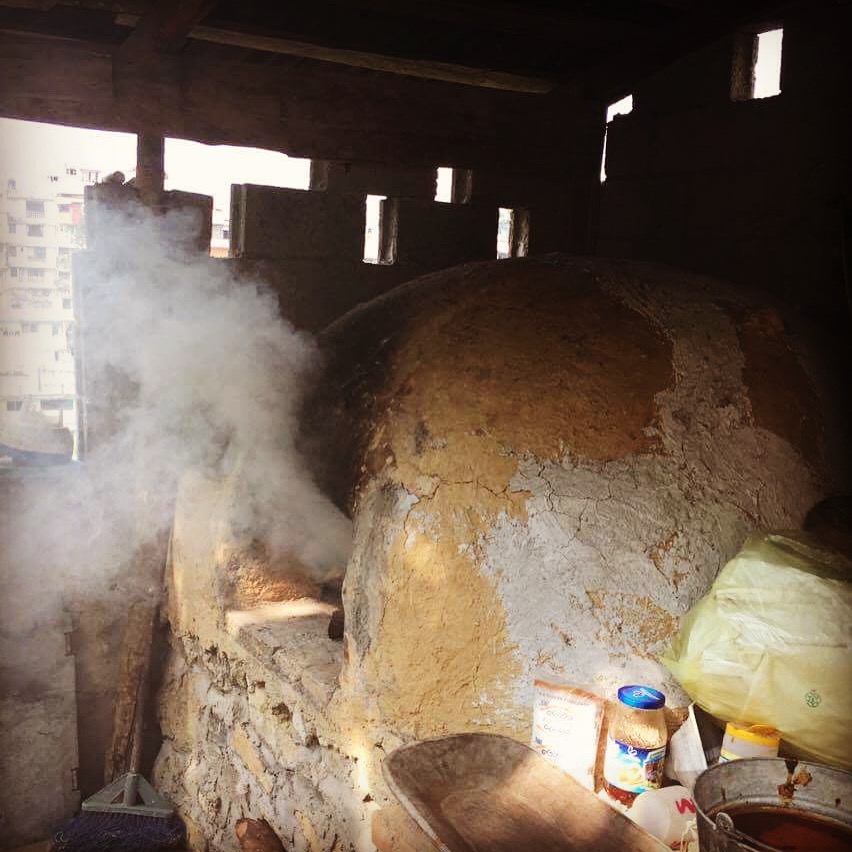
traditional adobe bake oven to make zacahil
The same recipe that was used hundreds of years by the Huastecs it’s still used today, albeit with some minor variations. One of the significant changes in the recipe for zacahuil is in the way it is cooked today. Before the arrival of the Spaniards, the Huastecs used an “earth oven” to cook the zacahuil. In this method a pit is dug into the ground and then heated with coal or firewood prior to placing the tamale. This method of cooking was very common among indigenous tribes all over the Americas; many believe this is where the word and the method for barbecue came from.
Countries throughout the world have used “earth ovens” as a means of cooking food. In parts of Africa and America people still use this method of cooking food. Earth ovens or pits dug into the ground are often used by large communities to cook food because of its convenience, as it is a smart way to cook large amounts of food and feed big communities.
With the arrival of the Spaniards, particularly to the Huastec region in Mexico, they introduced the concept of wood burning ovens. These ovens where also known as clay or traditional adobe oven. The Huastecs, along with other indigenous groups, adopted this method of cooking which facilitated the process of making zacahuil along with other foods introduced by the Spaniards.
Another important cultural change in the zacahuil is the choice of ingredients used to make this delicious dish. Just as food is a reflection of one’s culture and history, the zacahuil is a reflection of the interesting history that Mexico has endured and the interchange of cultural ideas brought by colonizers. Originally, the meat used to make this succulent dish was deer, pheasant, armadillo, turkey, quail, and even snake among other regional wild birds. The Spanish introduced domesticated animals such as pigs and cows and thus these cultural changes are reflected today in the recipe of zacahuil.
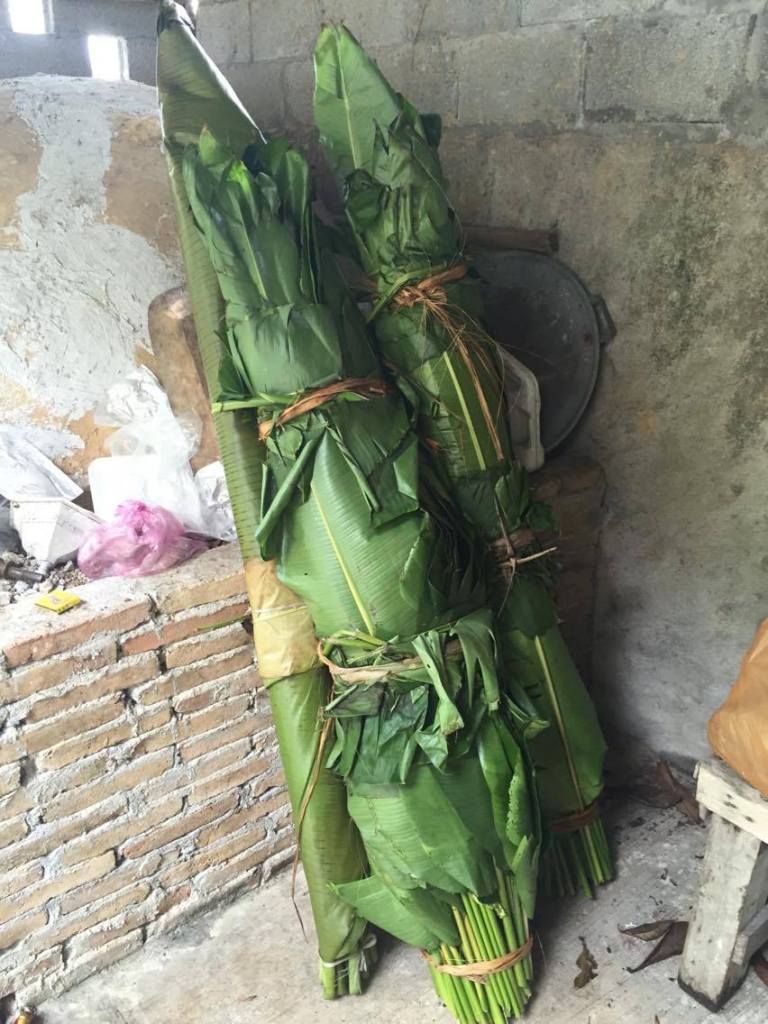
papatla leaves used to make zacahuil
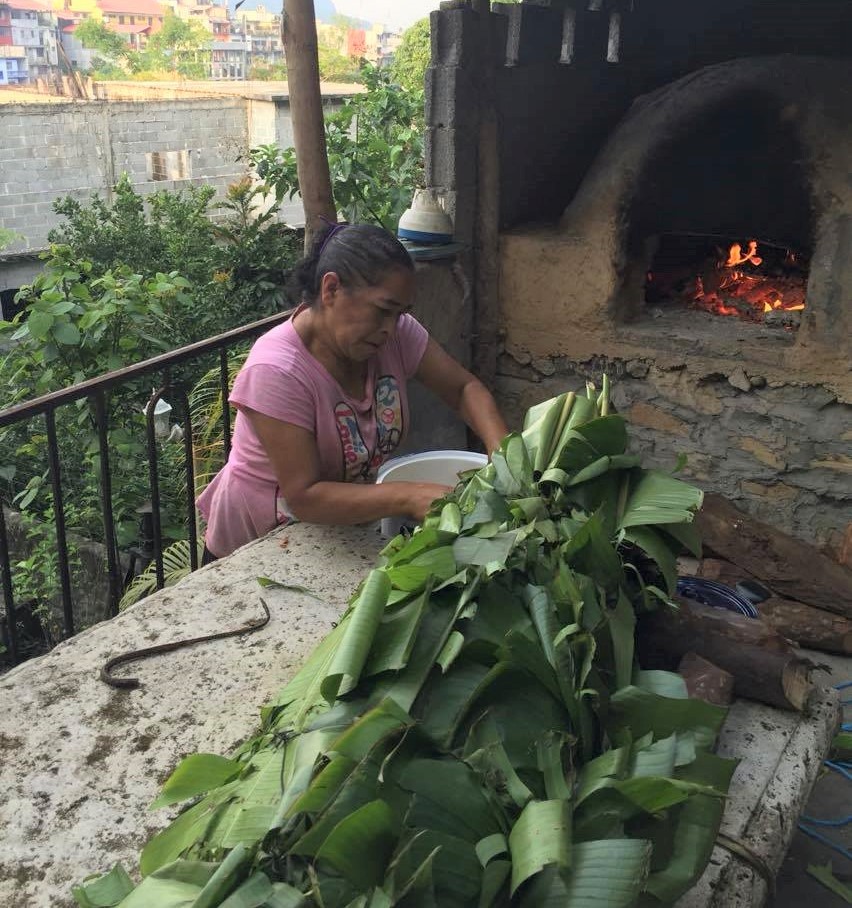
selecting the best papatla leaves prior to making zacahuil

this stand will hold the zacahuil in place

prepared zacahuil ready to be placed in the oven
Different regions also have a huge influence in the differences in flavors of today’s zacahuil. On my blog post Xilitla Beyond Edward James I explain more about the Huastec regions of Mexico but here is a quick overview: The Huastec region in Mexico encompasses part of the states of San Luis Potosí, Veracruz, Tamaulipas, and Hidalgo. Even though the four regions were once united before the arrival of the Spanish, they are now part of different states and thus have some cultural differences. The whole region is collectively known as the Huastec region. If one were to visit all the four regions the differences in flavor and texture of the zacahuil would be very apparent. For example, in Xilitla, a town located in the Huastec region of Potosí the consistency of the zacahuil is mushier and less dry than the zacahuil made in the Huastec region of Veracruz.
In the small towns of the Huastec region of Potosí, La Huasteca Potosina in Spanish, the families who prepare zacahuil are families who do so as a means to provide an income for their household. These families have prepared this ethnic dish for generations. Everyone in the town buys zacahuil according to their personal preferences, as every family’s special recipe is different. The cultural tradition is thus preserved as the recipe is passed down to each generation. Each family tries to prevent as best they can changing the recipe so that their children continue honoring the same family tradition.
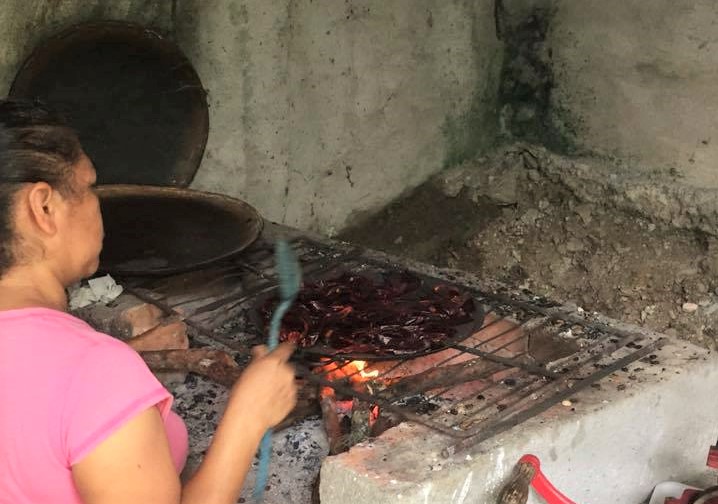
roasting a variety of dried chiles on a comal (skillet) prior to making the sauce
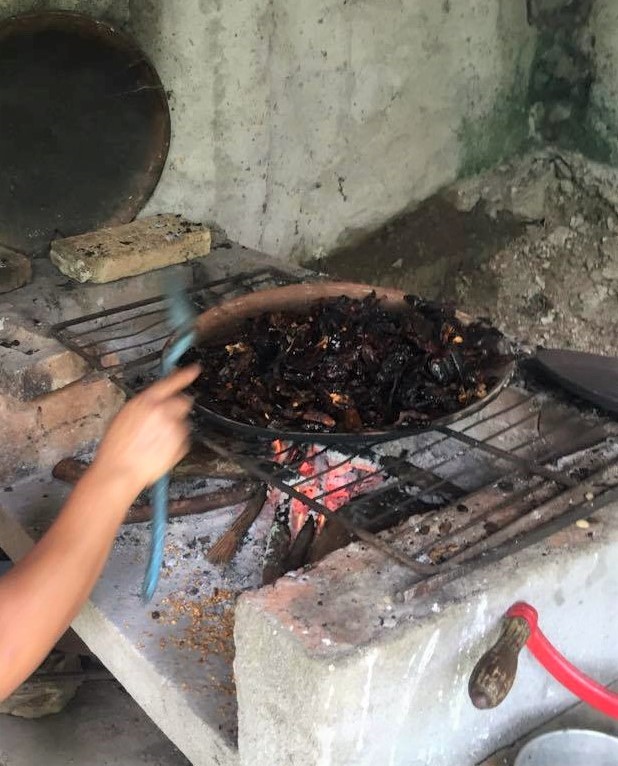
toasting ancho chiles to make the sauce

the dried chile pepper sauce is ready
Every family business prepares the zacahuil slightly different; variations in the flavor and spiciness of the chili pod sauce, the special sauce in which the meat is marinated, make each recipe unique. Regardless these variations, the method of preparing zacahuil is the same.
On these pictures, this family from the Huastec region of San Luis Potosí is preparing zacahuil using the ancient method. The special family recipe was handed down from previous generations. They are preparing this special dish to sell at the open market in Xilitla, a small town known for its rich indigenous culture and art history. In Xilitla, domestic and international tourists get to taste this ancient delicacy, which at one point was served as an offering to the gods of the Huastec peoples.
Check out the pictures and watch how the elaborate process of zacahuil is made and if you ever do travel to this part of Mexico I encourage you to try zacahuil for yourself. You’ll see why this ancient delicacy will continue to endure for generations to come.
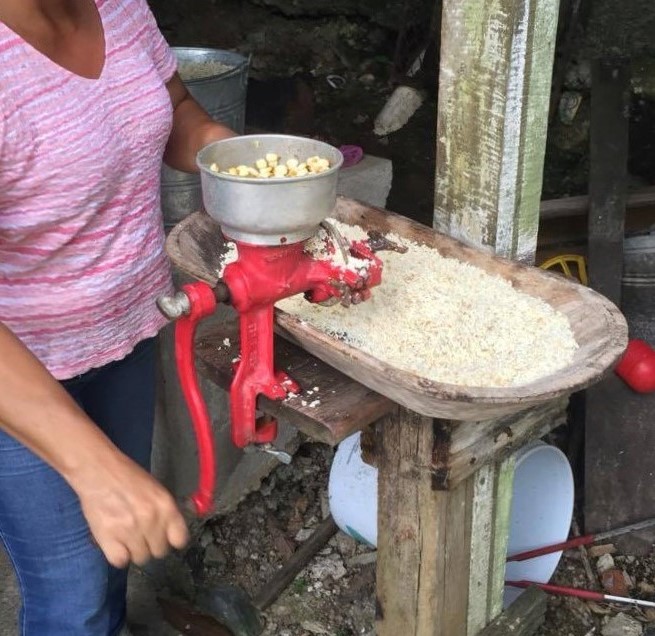
a manual crank corn grain grinder used to grind corn
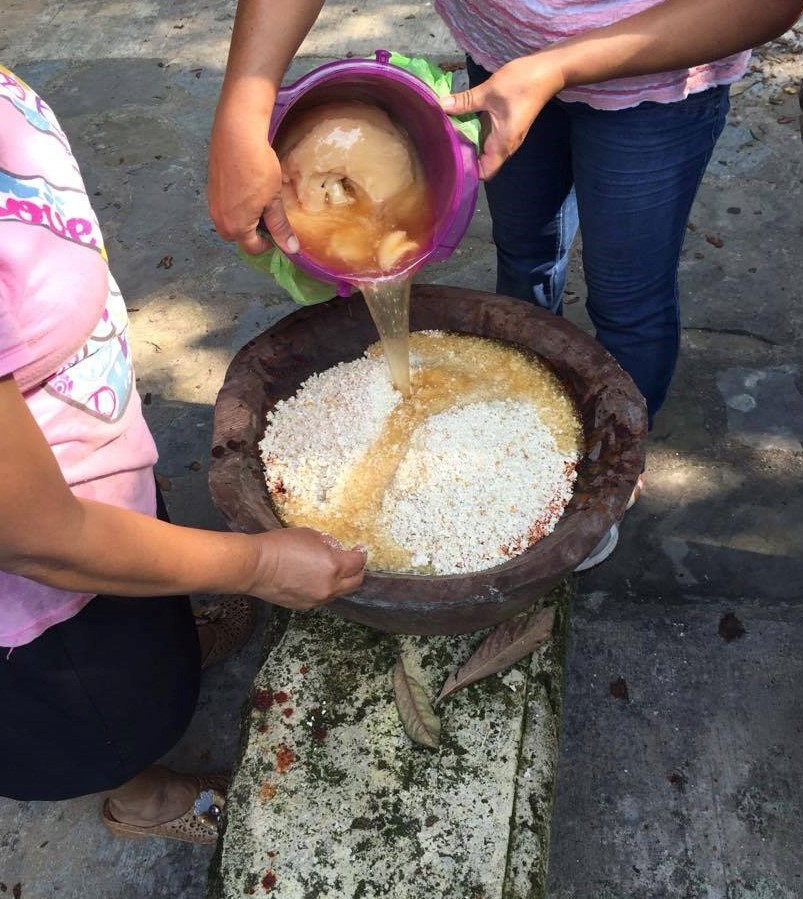
pouring lard into the masa corn
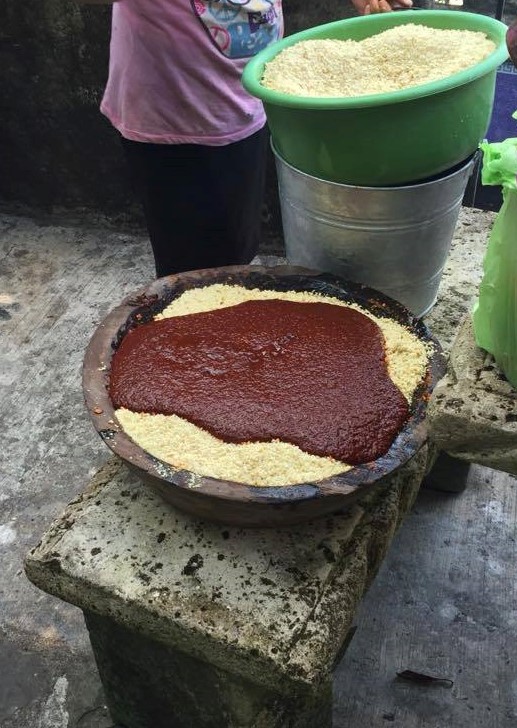
the toasted chile sauce is mixed with the ground corn

mixing chile sauce, corn masa and lard for zacahuil
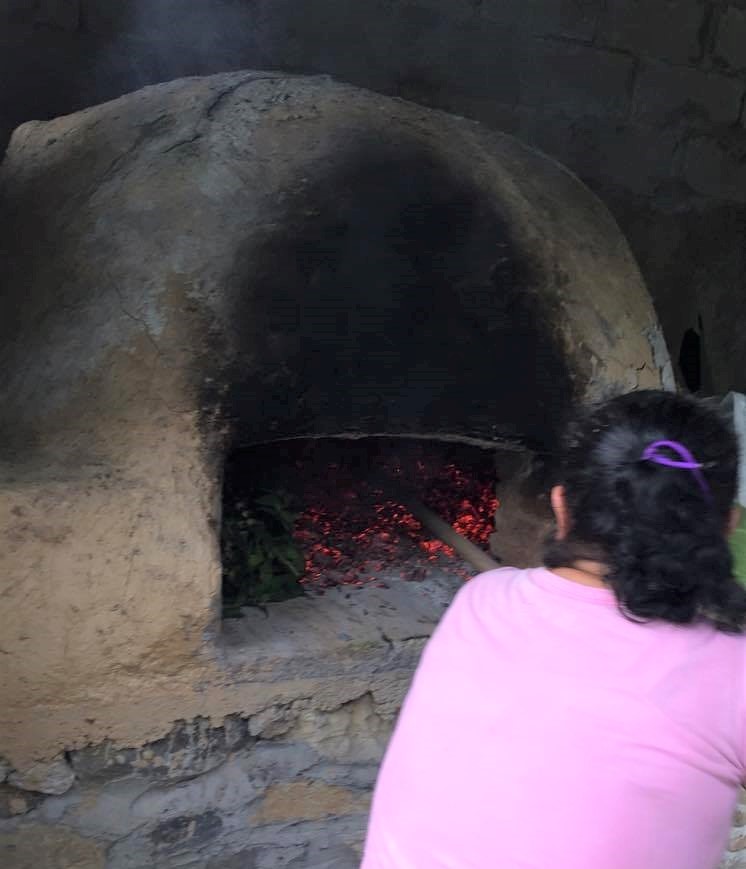
zacahuil is placed inside adobe oven to cook overnight
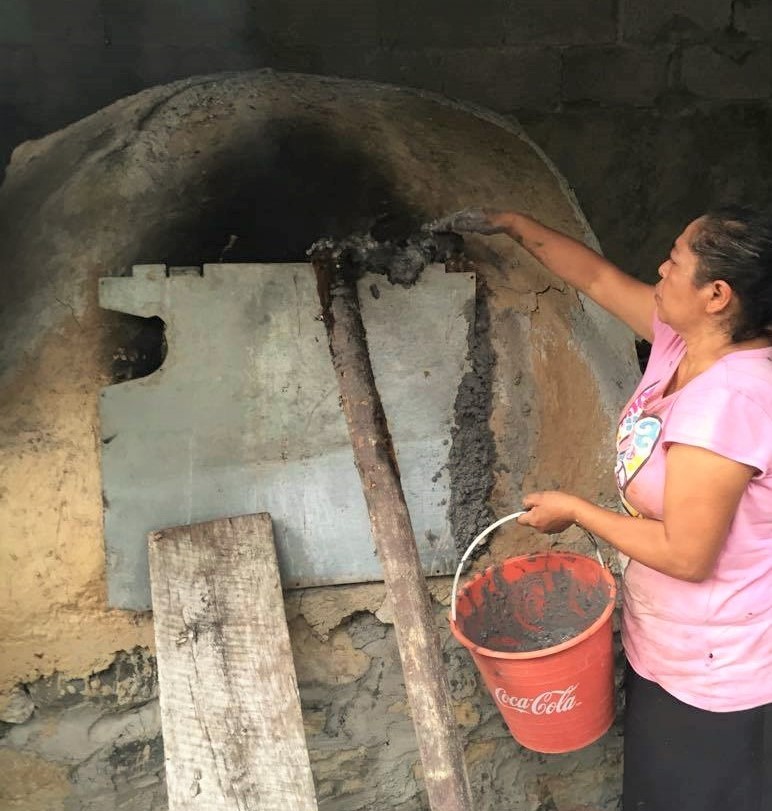
zacahuil is placed inside adobe oven and sealed with cement
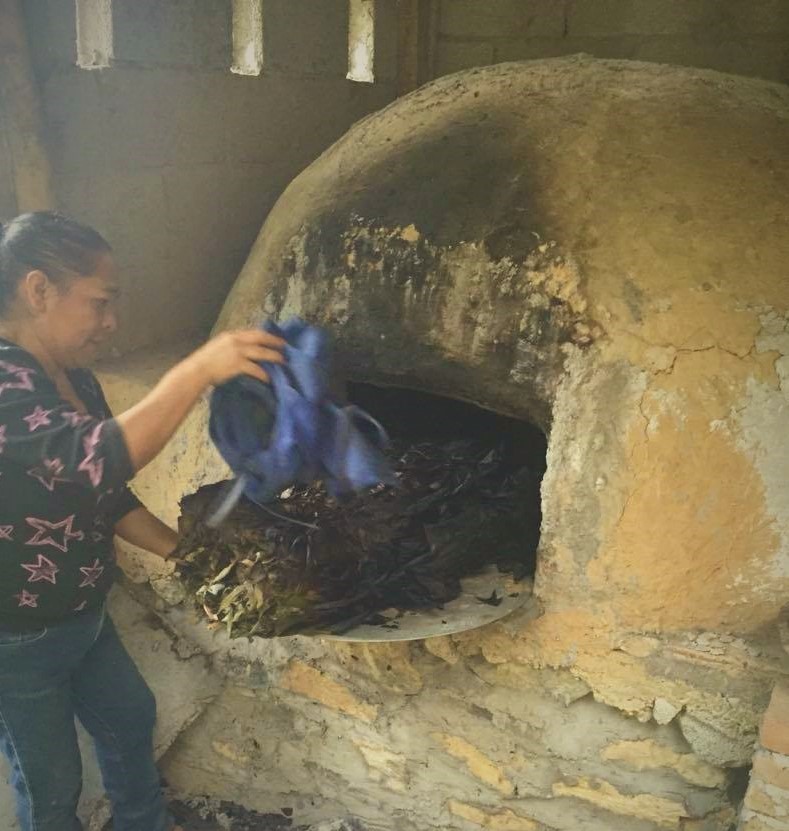
zacahuil is ready the next day
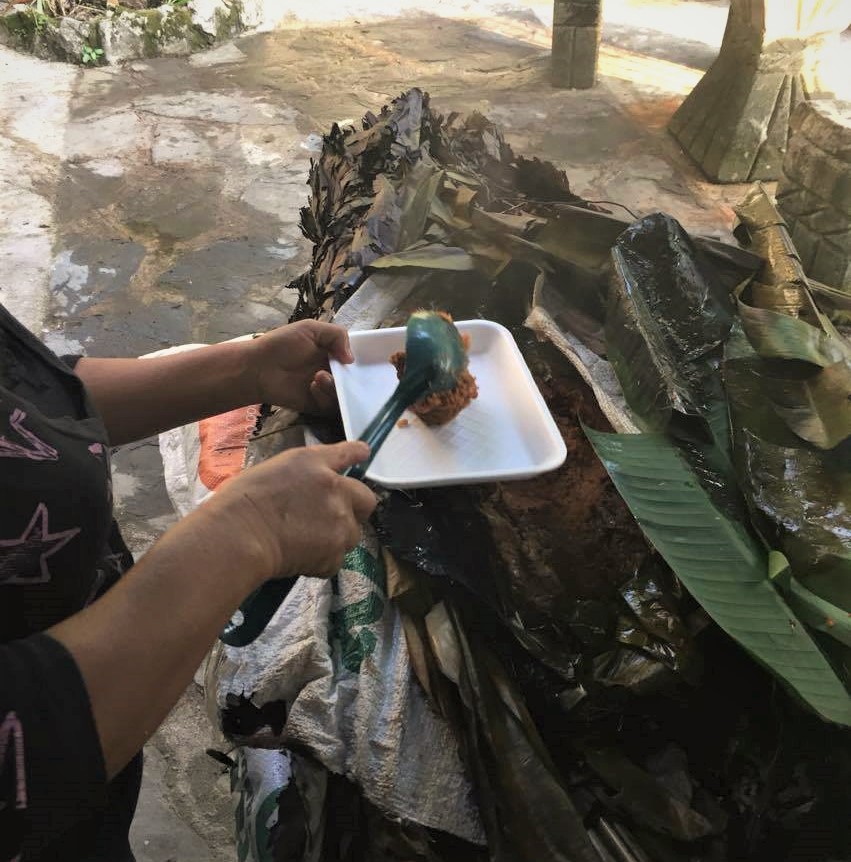
zacahuil is ready to be served
© Lizzeth Montejano and Aculturame, 2012-2019. Unauthorized use and/or duplication of this material without expressed and written permission from this blog’s author and/or owner is strictly prohibited. Excerpts and links may be used, provided that full and clear credit is given to Lizzeth Montejano and Aculturame with appropriate and specific direction to the original content.
If you are interested in any of my work (including pictures, text content, etc.) you can contact me at aculturame@gmail.com
If you would like to request permission to use any of my blog content please contact me at aculturame@gmail.com
Liz, I’ve never heard of this dish before, so thank you for introducing me to this unique dish. The amount of time and efforts spent for preparing this dish is both staggering and astonishing! Such an invaluable cultural heritage of the Huastec region.
Hi Bama thank you for reading my blog post, yes this dish is amazing and its recipe should be treasured as it is an ancient dish with an interesting history!
I absolutely love this. Back to the basics.
Hello Susan thank you for your comment, I love recording recipes from the country I grew up because it keeps me close to it. It’s a way to connect to my childhood memories. I like the recipes in your blog they look delicious and super healthy! I am going to try to make the Ugandan Chai Tea, tea is one of my favorite drinks :)
You will definitely enjoy the Chai tea. I drink it alot. If you we’re to do it grandma style, a charcoal roasted sweet potato with tahini mixed with peanut butter. That was always a breakfast in her kitchen 💞
Amazing history on a very timed and labor-intensive dish. Amazing!
I know right, takes a long time to make but the results are worth it! It tastes so good if you like savory, spicy food.
From what i read before your very interesting blog, the first Zacahuil were made with the meat of men who had raped women of a neighboring tribe. Obviously cannabalism didn´t go over well with the Spanish missionaries.
Thank you for your comment Susanna, I’ve also heard that cannibalism took place in Mexico among certain tribes. I also read that Aztecs used to eat those who were defeated in battle in their pozole as a way to disgrace them and their indigenous community. We talked about cannibalism in one of my college classes and also questioned the theory that the indigenous tribes practiced cannibalism; we know most of the accounts and chronicles were written by the Spanish and therefore, one-sided, there is also the theory that the Spanish might have lied so they could justify the evangelization of the indigenous people as a way to “civilize the heathen.”
I ate zacahuil in Aquismon, SLP.
More than once. I loved it with a squirt or more of limones or limes.
With a coke to drink! 1982–1984.
My dad is 84 years old and he still makes this dish on special occasions. It is delicious. My aunts make it too. Pork zacahuil is the best!!!
My dad was born in San Luis Potosí near the Oaxaca border. It’s been years since I’ve been back to Mexico. Hopefully one day I can take my family to visit.
I love zacahuil too! And yes, I agree that pork zacahuil is the best!
I’m so glad to hear that you dad is originally from San Luis Potosí, I hope you get to visit again with you family, I’m sure they will enjoy it!
I have other posts in my blog about San Luis Potosí that I’m sure you will enjoy!